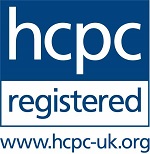Critical incident debriefing
In the recent events occurring across the world where individuals have experienced frightening or traumatic events, individuals, may feel inexperienced to deal with events. Consequently survivors often struggle to regain control of their lives in order to regain a sense of normalcy. Furthermore those who have been traumatized by a critical life-changing event may need professional attention and care for week, months or even years after the incident. The extent of any such trauma can never be underestimated by those who have experienced an event and reactions may be common and quite predictable but nevertheless frightening for those experiencing it. Critical incident debriefing (CID) can be a valuable tool following a life changing event.
Since the mid-1980s, following many high profile events the need to provide victim assistance to employees in the workplace setting has received more positive attention than ever before. This prevention and intervention movement has gained a lot of momentum which is designed to protect, provide resources and services to those who are physically or emotionally traumatized in the workplace.
What is a Critical Incident?
The author defines examples of a "critical incident" as a sudden death in the line of carrying out his or her day-to-day duties, serious injury from a shooting, a physical or psychological threat to the safety or well-being of an individual, business or community regardless of the type of incident. Moreover, a critical incident can involve any situation or event faced by emergency, public safety personnel (responders) or employees that causes a distressing, dramatic or profound change or disruption in their physical (physiological) or psychological functioning. It is important to remember that any incident can be deemed as critical as it is dependent on an individual’s experience of the event. No two people will experience an event in the same way and it is important to recognise and appreciate that an individual’s response to an incident is personal to you.
There are oftentimes, unusually strong emotions attached to the event which have the potential to interfere with that person’s ability to function either at the crisis workplace scene or away from it at home (Davis, 1992; Mitchell, 1983). This is what the author calls “dosage exposure”. The closer the employee or victim is to the critical incident (primary, secondary, tertiary or quaternary) the stronger or weaker the reaction (biopsychosocial and cultural) they will have to the event.
Clinically, traumatic events and their impact on individuals are fairly predictable. When a person has been "exposed" to a critical incident, either briefly or long-term, this exposure can have a considerable impact on their global functioning. Historically, some of the first documented cases of traumatic stress or what used to be called "transient situational disturbance" (TSD) can be traced to military combat.
Trauma Reactions
Trauma personnel refer to short-term crisis reactions as the "cataclysms of emotion" where feelings and thoughts run the spectrum and include such diverse symptoms as shock, denial, anger, rage, sadness, confusion, terror, shame, humiliation, grief, sorrow and even suicidal or homicidal ideation. Other responses include restlessness, fatigue, frustration, fear, guilt, blame, grief, moodiness, sleep disturbance, eating disturbance, muscle tremors or "ticks", reactive depression, nightmares, profuse sweating episodes, heart palpitations, vomiting, diarrhoea. hyper-vigilance, paranoia, phobic reaction and problems with concentration or anxiety (APA, 1994; Horowitz, 1976; Young, 1994). Flashbacks and mental images of traumatic events as well as startle responses may also be observed. It is important to consider that these thought processes and reactions are considered to be quite normal and expected with crisis survivors as well as with those assisting them. Some of the described symptoms surface quickly and are readily detectable. However, other symptoms may surface gradually and become what the author calls "long-term crisis reactions." These responses can be masked within other problems such as excessive alcohol, tobacco and/or drug use. Interpersonal relations can become strained, work-related absenteeism may increase and, in extreme situations, divorce can be an unfortunate by-product.
What is Critical Incident Debriefing (CID)
Debriefing is a specific technique designed to assist others in dealing with the physical or psychological symptoms that are generally associated with trauma exposure. Debriefing allows those involved with the incident to process the event and reflect on its impact. Ideally, debriefing can be conducted on or near the site of the event (Davis, 1992; Mitchell, 1986). Defusing, another component of CISD, allows for the ventilation of emotions and thoughts associated with the crisis event. Debriefing and defusing should be provided as soon as possible but typically no longer than the first 24 to 72 hours after the initial impact of the critical event. As the length of time between exposure to the event and CID increases, the least effective CID becomes. Therefore, a close temporal (time) relationship between the critical incident and defusing and initial debriefing (i.e., there may be several) is imperative for these techniques to be most beneficial and effective (Davis, 1993, Mitchell, 1988).
Research on the effectiveness of applied critical incident debriefing techniques in the workplace has demonstrated that individuals who are provided CISD within a 24-72 hour period after the initial critical incident experience less short-term and long-term crisis reactions or psychological trauma (Mitchell, 1988; Young, 1994). Subsequently, emergency service workers, rescue workers, police and fire personnel as well as the trauma survivors themselves who do not receive CID, are at greater risk of developing many of the clinical symptoms the author has briefly outlined in this article (Davis, 1992; Mitchell, 1988). From the author’s perspective, when applying debriefing techniques, an appropriate and effective standardized protocol must be followed when assisting responders and employee crisis survivors of any critical incident (more on that matter later or in future commentary).
Most approaches to CID incorporate one or more aspects of a Seven Part (7) Model. The model that the author suggests here consists of several key points that should be followed as a general guideline when addressing responders and/or employee-survivors who are involved in man-made, natural, accidental or industrial disasters.
A Crisis Intervention Response Specialist must lay the constructive groundwork for an initial "assessment" (audit) of the impact of the critical incident on the employee survivor(s) and support personnel by carefully reviewing their level of involvement before, during and after the critical incident (Mitchell, 1988, 1986; Davis, 1993).
As a general guideline, the author suggests incorporating the following seven (7) Key Points into the debriefing process when providing assistance to employee-survivors or to emergency rescue responders. They are:
1. Assess (audit) the impact of the critical incident on support personnel and survivors;
2. Identify immediate issues surrounding problems involving "safety" and "security;"
3. Use defusing to allow for the ventilation of thoughts, emotions, and experiences associated with the event and provide "validation" of possible reactions;
4. Predict events and reactions to come in the aftermath of the event;
5. Conduct a "Systematic Review of the Critical Incident" and its impact emotionally, cognitively, and physically on survivors. Look for maladaptive behaviours or responses to the crisis or trauma;
6. Bring "closure" to the incident "anchor" or "ground" support personnel and survivors to community resources to initiate or start the rebuilding process (i.e., help identify possible positive experiences from the event);
7. Debriefing assists in the "re-entry" process back into the community or workplace. Debriefing can be done in large or small groups or one-to-one depending on the situation. Debriefing is not a critique but a systematic review of the events leading to, during and after the crisis situation.
First, the "debriefer” assesses individuals' situational involvement, age, level of development and degree of exposure to the critical incident or event. Consider that different ages of the individuals, for example, one may respond differently based on their developmental understanding of the critical event (Davis, 1993)
Second, issues surrounding safety and security surface, particularly with children. Feeling safe and secure is of major importance when suddenly without warning, families, and employees lives are shattered by tragedy and loss.
Third, ventilation and validation are important to individuals as each, in their own way, needs to discuss their exposure, sensory experiences, thoughts and feelings that are tied to the event. Ventilation and validation are necessary to give the individual an opportunity to emote.
Fourth, the debriefer assists the employee survivor or support personnel in predicting future events. This involves education about and discussion of the possible emotions, reactions and problems that may be experienced after traumatic exposure. By predicting. preparing and planning for the potential psychological and physical reactions surrounding the stressful critical incident, the debriefer can also help the employee survivor prepare and plan for the near and long-term future. This may help avert any long-term crisis reactions produced by the initial critical incident.
Fifth, the debriefer should conduct a thorough and systematic review of the physical, emotional, and psychological impact of the critical incident on the workplace and on the employee survivor or survivors. The debriefer should carefully listen and evaluate the thoughts, mood, affect, choice of words and perceptions of the survivor of a critical incident and look for potential clues suggesting problems in terms of managing or coping with the tragic event upon impact and in the near future.
Sixth, a sense of closure is needed. Information regarding ongoing support services and resources is provided to survivors. Additionally, assistance with a plan for future action is provided to help "ground" or "anchor" the employee survivor during times of high workplace adjustment and stress following the incident.
Seventh, the debriefer and the use of debriefing assists in short-term and long-term recovery as well assisting the employer and the employee-survivor re-entry process. A thorough review of the events surrounding the traumatic situation can be advantageous for the healing and recovery process to begin.
Strong Reactions to Trauma are Not Always Immediate
As with any man-made, natural or accidental catastrophic event, many experience and do suffer from short-term crisis reactions. Others, depending on their “dosage exposure” may need attention for a psychiatric disorder called “posttraumatic stress disorder or PTSD. PTSD as a disorder can be difficult to diagnose as its onset can be acute or delayed. Without detection, the prevailing symptoms can be chronic. Furthermore, it can involve a host of other symptoms (syndrome) such as sleep disturbance, anxiety, acute reactive depression and phobic disorder just to name a few. Some employee-survivors and their families cannot be left alone because of overwhelming fear, loss of personal control over their environment, their community, their lives and livelihood. Almost everyone in a close, tight-knit business community will know someone who has been affected, hurt, seriously injured or perhaps who might have died. PTSD can be obvious in some employee-survivors and in other cases, PTSD can also exist at a more subtle level only surfacing when a memory or some sensory stimuli triggers it. It is something a specialist must look for and assess frequently when a critical or catastrophic incident occurs in the workplace or nearby community.
Summary
A human resource corporate officer, business manager or director must consider all of the implications of a workplace related critical incident do to legal, ethical and moral reasons. Furthermore, it has been demonstrated that Critical Incident Debriefing or CID and its close cousin, Critical Incident Stress Management or CISM is an effective way to intervene and reduce (mitigate) employee-survivor reaction to crisis.
It is highly recommended as part of an overall “risk management” strategic business plan for sustainability purposes; human resource officers must consider CID and CISM as an integral part of doing business on a day-to-day basis in the event of a critical or catastrophic work stoppage situation.
***Please note that the author has been trained in CID***



